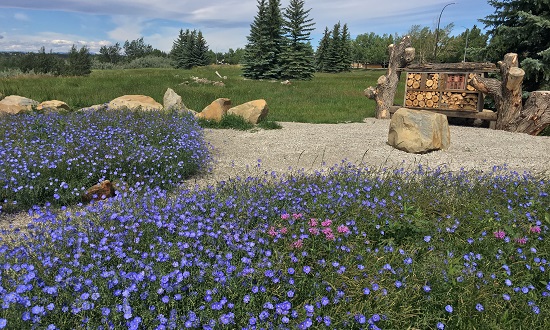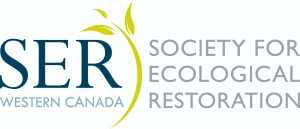
Creating a Buzz: Native Bee Restoration in Calgary

Researchers working with The City of Calgary recently made an exciting discovery on a roadside boulevard in the city, proving true the old adage, “if you build plant it, they will come.”
As part of Calgary’s naturalization initiative, native flowers that provide habitat for pollinators were planted, creating a “pollinator corridor” along Canyon Meadows Drive in the southeast quadrant of the city. It was in this corridor last summer that Lincoln Best, a pollinator expert, collected specimens to monitor the project’s benefit to pollinators.
In February 2019, he confirmed the identity of one specimen to be a native species of bee called the Gypsy Cuckoo Bumble Bee (Bombus bohemicus), which is listed as endangered in Canada under the Species at Risk Act.
So, how did this project woo the Gypsy Cuckoo to Calgary? “At its core, the project was about re-introducing native plant species and creating habitat that appeals to pollinators, and bees, specifically,” says David Misfeldt, Boulevard Technician and the project manager.
The team began by seeding 0.6 hectares of median along Canyon Meadows Drive with a mix of mostly native, salt-tolerant grasses and wildflowers. “Flower beds included native plants that bloom throughout the season to attract as many native bee species as possible,” says Jenna Cross, Parks Ecologist and the project’s vegetation expert. Since some native bees are only attracted to a single species of flower, studies are ongoing to learn which flowers they are attracted to.
Additionally, numerous types of housing and nesting sites for native pollinators were installed. These habitat enhancements include a sand bed for ground-nesting mason bees, numerous structures designed to provide habitat for cavity nesting bees, an interactive leaf-cutter bee display, bumble bee houses and associated interpretive signage.
The main flower bed is the central feature built in the shape of a flower (visible from Google Earth). An important aspect that will keep the maintenance low in these flower beds is the use of a seeded ground cover instead of mulch.
This project was also an exercise in environmentally friendly construction, using recycled materials that would have otherwise made their way to the landfill. The site design included repurposed logs from a golf course where trees had to be removed, recycled crushed concrete to shape the paths around the main flower bed and the use of sandstone boulders that were taken from newer communities where new roads had just been built.
